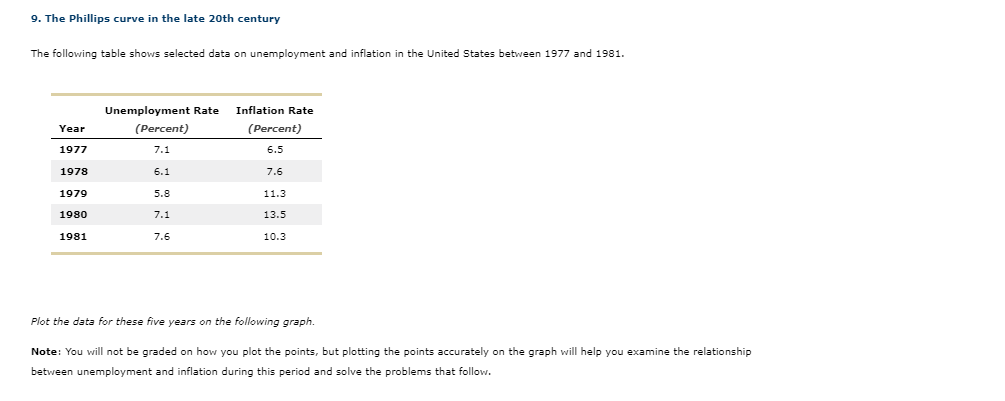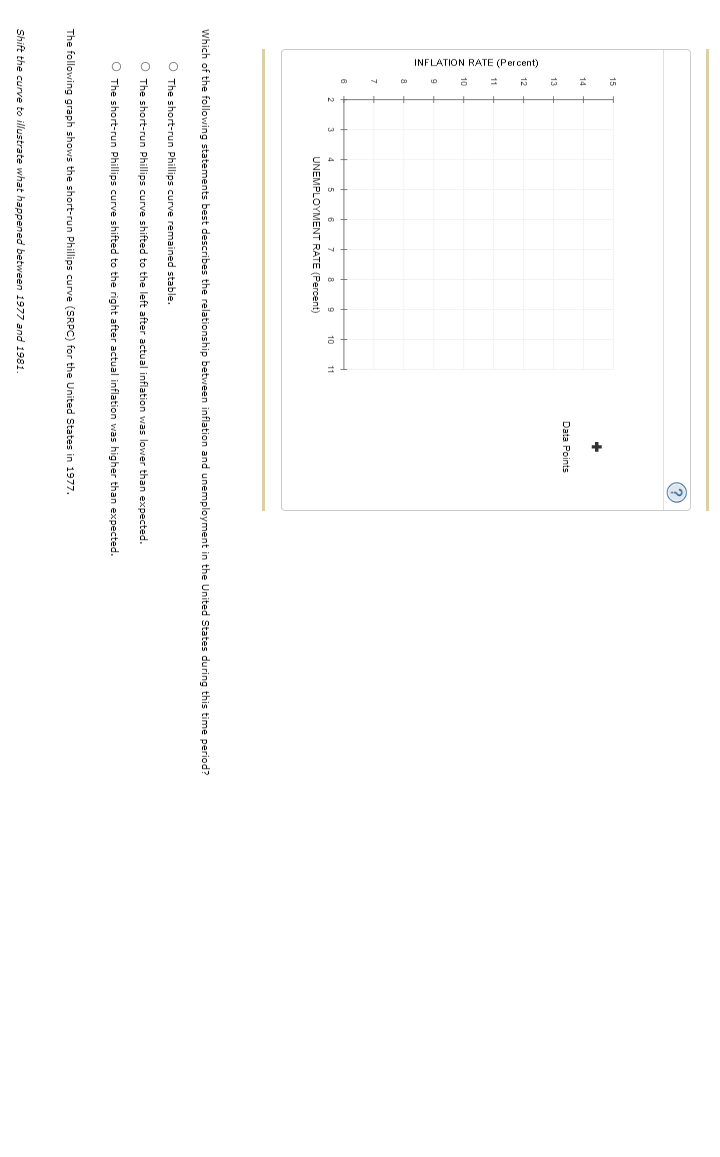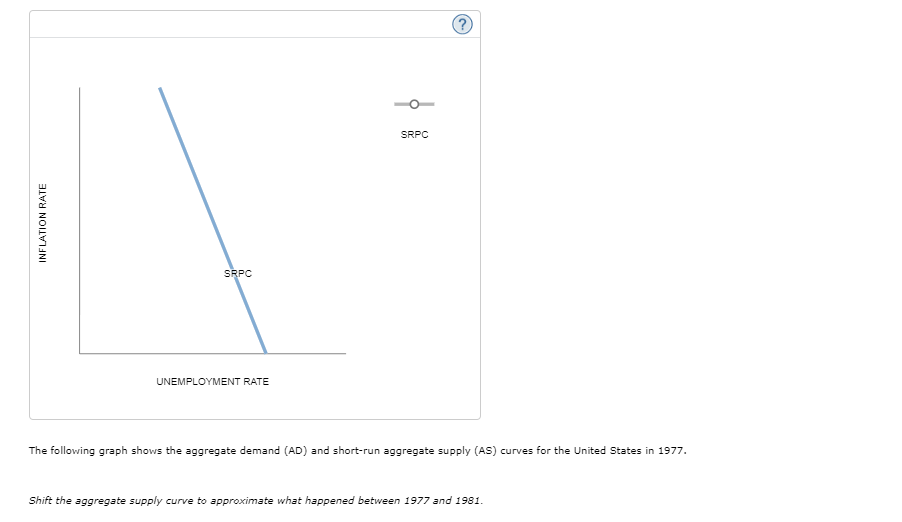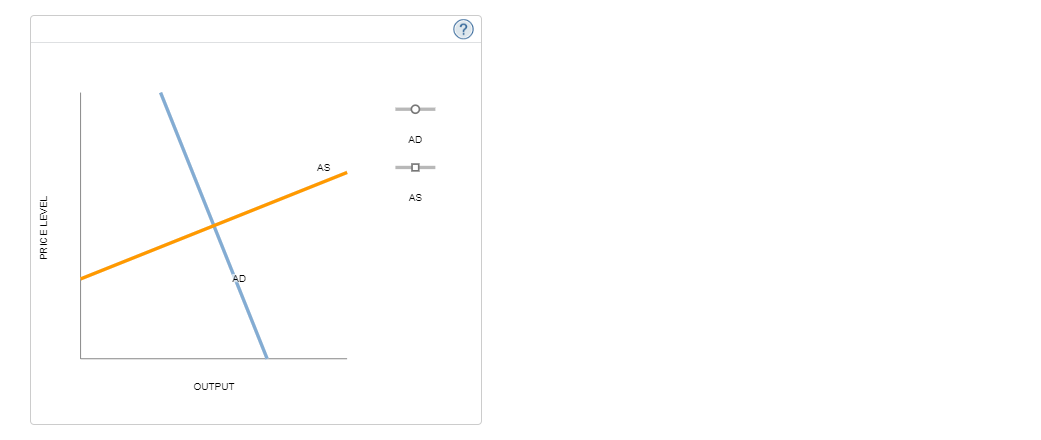Home /
Expert Answers /
Economics /
9-the-phillips-curve-in-the-late-20th-century-the-following-table-shows-selected-data-on-unemploy-pa149
(Solved): 9. The Phillips curve in the late 20th century The following table shows selected data on unemploy ...
9. The Phillips curve in the late 20th century The following table shows selected data on unemployment and inflation in the United States between 1977 and 1981. Unemployment Rate Inflation Rate Year (Percent) (Percent) 1977 7.1 6.5 1978 6.1 7.6 1979 5.8 11.3 1980 7.1 13.5 1981 7.6 10.3 Plot the data for these five years on the following graph. Note: You will not be graded on how you plot the points, but plotting the points accurately on the graph will help you examine the relationship between unemployment and inflation during this period and solve the problems that follow.
INFLATION RATE (Percent) 15 14 13 3 + 10 1 2 4 5 R 7 R 9 11 UNEMPLOYMENT RATE (Percent) Which of the following statements best describes the relationship between inflation and unemployment in the United States during this time period? O The short-run Phillips curve remained stable. O The short-run Phillips curve shifted to the left after actual inflation was lower than expected. O The short-run Phillips curve shifted to the right after actual inflation was higher than expected. The following graph shows the short-run Phillips curve (SRPC) for the United States in 1977. Shift the curve to illustrate what happened between 1977 and 1981. Data Points
SRPC SRPC UNEMPLOYMENT RATE The following graph shows the aggregate demand (AD) and short-run aggregate supply (AS) curves for the United States in 1977. Shift the aggregate supply curve to approximate what happened between 1977 and 1981. INFLATION RATE
OUTPUT PRICE LEVEL AS 5 486



